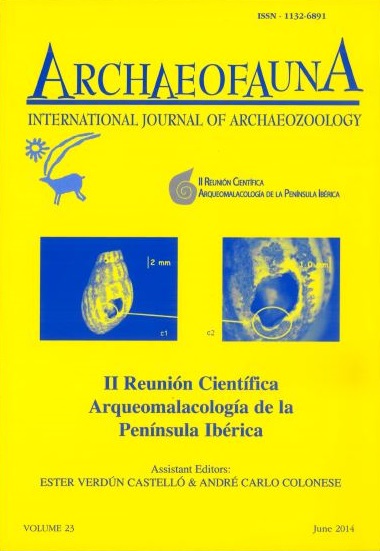Acumulações de conchas mortas de moluscos na ilha da Ínsua (Caminha, Portugal)
Palabras clave:
Ínsua, Franciscanos, Moluscos, Cal , ConchasResumen
De la información recogida por las crónicas históricas franciscanas de Fray Manuel da Esperança (1666) y Fray Pedro de Jesús María José (1760), encontramos en el Archivo del distrito de Braga una transcripción de un documento del siglo XVIII compuesto de dos partes (fechadas en 1441 y 1467) sobre las conchas de la isla de Insua. De acuerdo con la primera parte, la alcaldía de Caminha estuvo grabando impuestos a las conchas que los monjes franciscanos recogían en Insua. Los franciscanos protestaron y lograron detener los gravámenes. No obstante, años después la alcaldía volvió a imponer dicho impuesto, ya que en la segunda parte del documento, la casa de Vila Real, que poseía el Señor de Caminha desde 1464, informaba a la alcadía, ya que es él quien posee las rentas de Caminha. Tal conflicto en torno a este recurso natural remite a la importancia y abundancia de las conchas en esta isla. Dicha importancia derivaría de su uso en la confección de cal (lo cual menciona Manoel da Esperança), un ingrediente indispensable en la época en la preparación de mortero –necesario para la construcción– así como su uso en agricultura como fertilizante. Para confirmar la abundancia de conchas en Insua y comprender la dinámica de las acumulaciones, se realizó un trabajo de campo en el año 2010. Se constataron grandes acúmulos de conchas, especialmente en las zonas occidental y meridional de la isla, con masas que superaban las 10 toneladas. Los acúmulos estaban dominados por cuatro taxones (Mytilus galloprovincialis, Nucella lapillus, Patela spp. y Gibbula umbilicalis), con algunos ejemplares alcanzando tallas muy notables. Los moluscos fluviales y de estuario eran minoritarios. Se concluye que estos acúmulos derivan de ejemplares locales que las tempestades y la mortandad natural se ocupan de agrupar. La abundancia y riqueza del recurso se debe a la localización de la isla, donde las corrientes mezclan aguas ricas en nutrientes, en especial las que aporta el río Miño. En conjunto, estos concheros constituyen los más importantes de la costa continental portuguesa. Su uso es un caso raro (o único) de uso de conchas para la producción de cal en el Portugal medieval. Los resultados del estudio biológico validaron la autenticidad del documento analizado y de las crónicas franciscanas.

